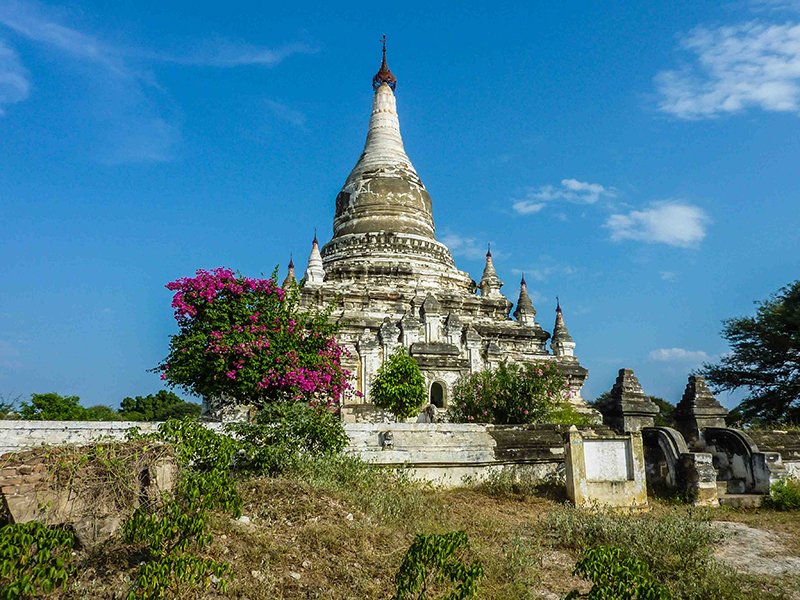Location: This temple is situated a little distance from the south of the city wall.
Close to: Hpet-Leik with reclining Buddha and Jataka tablets
Year Built: 1057 AD
Builder/Monarch: King Anawrahta (after his conquest of Thaton)
Architectural details: It is shaped like a pyramid, with five concentric square terraces imitating the slopes of Mount Meru (a Hindu concept absorbed into Buddhism).
Renovations: This temple was whitewashed in 1957. It was damaged in the 1975 earthquake and the spire was catapulted down all five of the terraces. It is still on the ground where it landed.
Terracotta votive tablets: Tablets with Anawrahta’s name were discovered in a relic chamber. According to Stadtner, over 20 small unglazed terracotta jataka plaques are associated with this stupa, but they are not inscribed with captions, so we don’t know which stories they represent. There are walls of unglazed jataka plaques in the close by Hpetleik stupas.
Stories about origination: This is the first Pagan stupa at such a grand scale. Luce believed it was built to enshrine the “Sacred Hair Relic” or shwa-san-daw which King Anawrhata brought back with him after his raid on Thaton, presented to him by the king of Pegu. This king built four other stupas as well, including Myainkaba, Loka-nanda, Turin-daung, and the majestic Shwezigon.
References:
Ancient Pagan: Buddhist Plain of Merit, Donald Stadtner, River Books, 2013
Pagan: Art and Architecture of Old Burma, Paul Strachan, Kiscadale Publications, 1989
Guide to Bagan Monuments by Min Bu Aung Kyaing, U Zaw Min Aye (Zaw Press), 2007
Inventory Of Monuments In Bagan, Pierre Pichard, UNESCO, 8 volumes, 1992-2001
